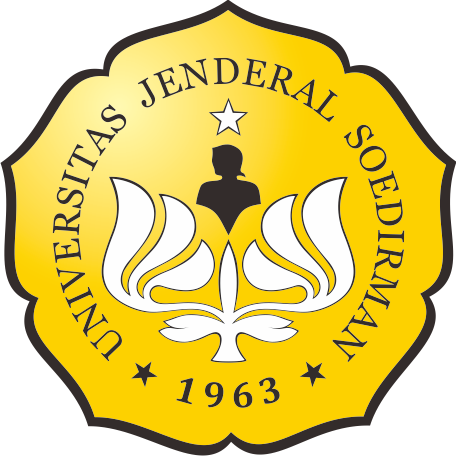BIODIVERSITAS KUPU-KUPU DI TAMAN WISATA ALAM PANANJUNG PANGANDARAN SEBAGAI ACUAN DASAR PENENTUAN STRATEGI KONSERVASI
Abstract
This study aims to determine the biodiversity of butterflies, the relationship between the number of butterflies with the number of visitors and the strategy of butterfly conservation needed to manage the diversity of butterflies in Nature Recreational Park, Pananjung. This research was conducted by field survey method. Parameters observed at each site include vegetation diversity, direct collection and observation of butterflies. The parameters observed at each location include the index of diversity (H '), and regression analysis. Samples are taken from ecosystem which is divided into three stations ie many visitors station, station little visitors, station no visitors as much as thirteen times. The study was conducted at the end of December 2016 - end of March 2017 for 3 Months. The results of the study found 59 species of 1165 individuals. The variety of butterflies including high category (H '= 3.651) with fairness is still relatively high (E = 0.887). In addition, the amount of influence the number of visitors to the number of butterflies (r square) 0,398 or 39,8 % with regression equation is: yaitu : Y = -0,0000079X3 + 0,005X2 – 0,828X + 44,083. The more visitors who come to ecosystem the more will decrease the number of butterflies. Furthermore, the conservation strategy that is needed in ecosystem is need to do in situ butterfly capture from Nature Recreational Park, Pananjung because of the discovery of endemic species of Tanaceia trigerta and rare species, Troides helena.
Keywords
References
Arambiza, E. and Painter M., 2006, Biodiversity Conservation and the quality of Life of Indigenous People in the Bolivian Chaco, Human Organization Spring 2006, ABI/ INFORM Research.
Bobo, K.S., Waltert, M., Fermon, H., Njokagbor, J and Muhlenberg, M. 2006. Form forest to farmland : butterfly diversity and habitat asscociations along gradient of forest conversion in southwest cameroon. J.Ins.Consev. 10: 29 – 42.
De Vries, P. J., Walla, T. R. And Greeney, H. (1999). Specise diversity in spatial and temporal dimensions of fruit feeding butterflies from two equadorian rainforest. Biological Journal of Linnean Society. 63, 333-353.
Ferelia, L. H. 2016. Pengelolaan dan Potensi Ekowisata di Taman Nasional Bantimurung Bulusaraung. Jurnal Ilmu-Ilmu Pertanian “Agrika” , Volume 10. Nomor 2.
Freitas, A.V. L, Benson, W. W., Filho, O. J. M, de Carvalho R. M. 1997. Territoriality by the dawn’s early light: the Neotropical owl butterfly Caligo idomenaeus (Nymphalidae: Brassolinae). J. Resc of Lepi. 34 : 14 – 20.
Gaston, K. J. 2000. Global Patterns in Biodiversity. J. Nat. 405: 220–227.
Grundel, R., Pavlovic, N., B. 2000. Nectar plant selection by the karner blue butterfly (Lycaeides melissa Samuelis) at the Indiana Dunes National Lakeshare. Am Midle Nat. 144: 1-10.
Hill, J. K., Hamer, K. C., Tangah, J. and Dawood, M. 2001. Ecology of tropical butterflies in rainforest gaps. Oecologia. 128: 294-302.
Hirota, T., Obara, Y. 2000. The influence of air temperature and sunlight intensity on mate-locating behavior of Pieris rapae crucivora. Zool Sci 17: 1081-1087.
Hodgson, J. A. Thomas, C. D. Wintle, B. A., and Moilanen, A. 2009. Climate change, connectivity and conservation decision making : back to basics. Journal of Applied Ecology. 46 : 964-969.
Jeevan, E. N., K. L. Naik., H. M., Ashashree and H.A.Sayeswara. 2013. Butterfly Diversity and status in Mandagadde of Shivamogga, Karnataka, India. International Journal of Applied Biology and Pharmaceutical Technology. 4: 325-332.
Kingsolver, J., G. 1985. Thermal ecology of Pieris butterflies (Lepidoptera: Pieridae): a new mechanism of behavioral thermoregulation. Oecologia 66: 540-545.
Kitahara, M., Yumoto, M., and Kobayashi, T. 2008. Relationship of butterfly diversity with nectar plant species richness in and around the Aokigahara primary woodland of Mount Fuji, Central Japan. Biodivers Conserv. 17: 2713-2734.
Koh, K. P, dan Sodhi, N. S. 2004. Importance of reverse, fragments and parks for butterfly conservation in a tropical urban lanscape. Ecol Appl. 14 (6): 1695-1708.
Kramer, B., Poniatowski, D., and Fartmann T. 2012. Effects of landscape and habitat quality on butterfly communities in pre-alpine calcareous grasslands. Biological Conservation. 152 : 253-261.
Kumar, A. 2014. Butterfly Abundance and Species Diversity in some Urban Habitats. International Journal of Advanced research. 2 (6) : 367-374.
Leidner, K. A., Haddad, N. M., and Lovejoy, T., E. 2010. Does tropical fragmentation increase long-term variability of butterfly communities?. Plos ONE. 5 (3): 1-8.
Luk, C. L., Kesumawati, U. H., Ziegler, T., Waltert, M. 2011. Vertical and horizontal habitats of fruit-feeding butterflies (Lepidoptera) on Siberut, Mentawai Island, Indonesia. Ecotropica. 17: 79-90.
Magurran, A. E. 1988. Ecological Diversity and Its Measurement. Chapman and Hall: USA. pp. 192.
Pollard, E. 1977. “A method for assesing changes in the abundance of butterflies,” Biological Conservation. Vol. 12, no.2, pp. 115-134.
Pollard, E. D. O. Elias M. J. Skelton, and J. A. Thomas. 1975.‘A method of asssesing the abundance of butterflies in Monks Wood National Nature Reserve in 1973,’ Entomologist’s Gazzette. Vol. 26, pp.79-88.
Pollard, E. 1991. Monitoring butterfly numbers. Monitoring for ecology and conservation, (Ed. By F.B. Goldsmith), pp. 87-111. Chapman and Hall, London.
Pollard, E. 1992. Temperature, rainfall and butterflies number. J Appl Ecol. 25: 819-828.
Priyono, B. & M. Abdullah. 2013. Keanekaragaman Jenis Kupu-kupu di Taman KEHATI UNNESS. Universitas Negeri Semarang. Biosaintifika 5(2). : 77.
Rahayu, S. E., dan Adi, B. 2012. Kelimpahan dan Keanekaragaman Species Kupu-kupu (Lepidoptera: Rhopalocera) pada Berbagai Tipe Habitat di Hutan Kota Muhammad Sabki Kota Jambi. Jurnal Biospecies, 5 (2) : 40-48.
Schultze, C. H. 2007. Identification guide for butterflies of West Java. http://www.scribd.com/. Accesesed date: April 20, 2010.
Severns, P. M. 2008. Seeding population size and microhabitat association in Lupinus oreganus a threatened plant of western oregon grasslands. Nativeplants 3: 358-364.
Smetacek, P. 2000. The naming of Indian butterflies. Resonance 5: 8-14.
Spitzer, K., Jaros, J., Havelka, J., and Leps, J. 1997. Effects of small - Scale disturbance on butterfly communities of an Indochinese mountaian Forest. Biological Conservation. 80 : 9-15
Sreekumar, P. G., and Balakrishnan, M. 2001. Habitat and altitude preference of butterflies in Aralam Wildlife Sanctuary, Kerala. Trop Ecol. 42: 277-281.
Tabadepu, H. Damayanti, B., Bandung S. 2008. Butterfly record from salak mountain, Indonesia. J Entomologi Indonesia. 5 (1): 10-16.
Wang, L., L. Zhong, Y. Zhang dan B. Zhou. 2014. Ecotourism Environmental Protection Measures and Their Effects on Protected Areas in China.
Watanabe, M., Imoto, T. 2003. Thermoregulation and flying habits of the Japanese sulfur butterfly Colias erate (Lepidoptera: Pieridae) in an open habitat. Entomol Sci 6: 111-118.
Whitten, R. E., S. Soeriaatmadja. dan Affiff. 1999. Ekologi Jawa dan Bali. Kanisius. Jakarta.
Widhiono, I. 2015. Diversity of butterflies in four different forest types in Mount Slamet Central Java, Indonesia. Biodiversitas. Vol 16 (2): 196-204.
Willot, S. J., Lim, D. C., Compton, S.G., and Sutton. 2000. effects of selective logging on butterflies of Bornean Rainforest. Conservation Biology. 8: 388-397.
Article Reads
Total: 892 Abstract: 892Refbacks
- There are currently no refbacks.

This work is licensed under a Creative Commons Attribution-ShareAlike 4.0 International License.
This website is maintained by:
Bio Publisher
The Faculty of Biology Publishing
Faculty of Biology
Universitas Jenderal Soedirman
Jalan dr. Suparno 63 Grendeng
Purwokerto 53122
Telephone: +62-281-625865
Email: biologi@unsoed.ac.id
T his website uses:
OJS | Open Journal System
A free journal management and publishing system that has been developed by the PKP (Public Knowledge Project) version 2.4.8.0.
All article content metadata are registered to:
Crossref
An official nonprofit Registration Agency of the International Digital Object Identifier (DOI) Foundation.
Articles in this journal are indexed by:









